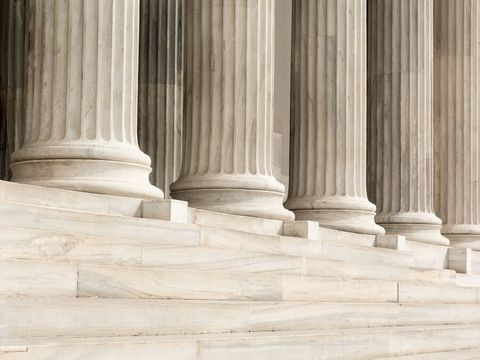Supreme Court Approves E-Discovery Amendments to FRCP
Client Alert | 1 min read | 04.18.06
Last week the United States Supreme Court approved, without comment or dissent, each of the proposed amendments to the Federal Rules of Civil Procedure concerning the discovery of electronically stored information. Absent contrary congressional action, the amended rules will take effect on December 1, 2006. The amendments are designed to acknowledge the differences between electronically stored information and traditional paper files, including the vastly greater volume of electronic material, differences in the way that electronic files are created, stored, collected and archived, and the particular challenges parties face when trying to identify, preserve, and produce potentially relevant electronic material.
These significant amendments to the Federal Rules include provisions:
- Requiring E-discovery issues to be examined at the outset of a lawsuit (Rules 16 & 26(f));
- Requiring the mandatory disclosure of categories and locations of electronically stored information (Rule 26(a)(1)(B));
- Imposing a “reasonably accessible” standard to determine if a party must produce electronically stored information (Rule 26(b)(2)(B));
- Introducing a “clawback” provision relating to inadvertently produced privileged information (Rule 26(b)(5)(B));
- Establishing a standard for the production of electronic files (i.e., “ordinarily maintained” or “reasonably usable”) if a production format is not specified by the requesting party (Rule 34); and
- Creating a “safe harbor” provision for electronic information that is lost due to the routine operation of IT systems as long as reasonable steps were taken to preserve the information after knowing it was discoverable (Rule 37).
Even before the amendments were approved, we have found that courts increasingly have been following these general principles. We expect much debate and litigation regarding the interpretation of these rules, as parties continue to struggle with the litigation challenges created by electronic discovery.
Contacts
Insights
Client Alert | 5 min read | 12.12.25
Eleventh Circuit Hears Argument on False Claims Act Qui Tam Constitutionality
On the morning of December 12, 2025, the Eleventh Circuit heard argument in United States ex rel. Zafirov v. Florida Medical Associates, LLC, et al., No. 24-13581 (11th Cir. 2025). This case concerns the constitutionality of the False Claims Act (FCA) qui tam provisions and a groundbreaking September 2024 opinion in which the United States District Court for the Middle District of Florida held that the FCA’s qui tam provisions were unconstitutional under Article II. See United States ex rel. Zafirov v. Fla. Med. Assocs., LLC, 751 F. Supp. 3d 1293 (M.D. Fla. 2024). That decision, penned by District Judge Kathryn Kimball Mizelle, was the first success story for a legal theory that has been gaining steam ever since Justices Thomas, Barrett, and Kavanaugh indicated they would be willing to consider arguments about the constitutionality of the qui tam provisions in U.S. ex rel. Polansky v. Exec. Health Res., 599 U.S. 419 (2023). In her opinion, Judge Mizelle held (1) qui tam relators are officers of the U.S. who must be appointed under the Appointments Clause; and (2) historical practice treating qui tam and similar relators as less than “officers” for constitutional purposes was not enough to save the qui tam provisions from the fundamental Article II infirmity the court identified. That ruling was appealed and, after full briefing, including by the government and a bevy of amici, the litigants stepped up to the plate this morning for oral argument.
Client Alert | 8 min read | 12.11.25
Director Squires Revamps the Workings of the U.S. Patent Office
Client Alert | 8 min read | 12.10.25
Creativity You Can Use: CJEU Clarifies Copyright for Applied Art
Client Alert | 4 min read | 12.10.25
Federal Court Strikes Down Interior Order Suspending Wind Energy Development



